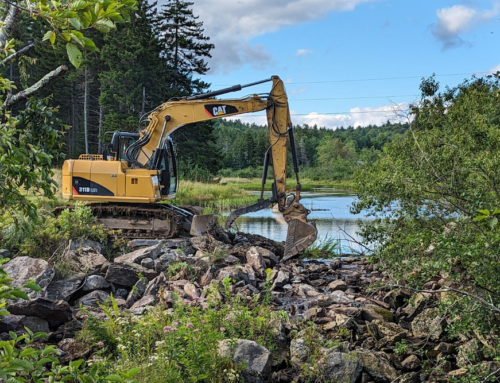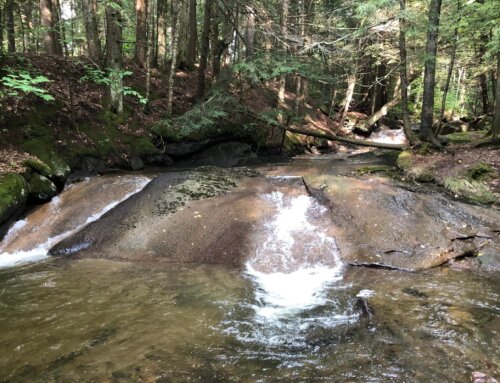Greenfield, MA— The Connecticut River Conservancy (CRC) today announced the completion of five years of work to improve the health of the Connecticut River and the Long Island Sound. This work was part of a $10 million grant from the USDA’s Regional Conservation Partnership Program (RCPP) awarded to the CT Council on Soil and Water Conservation to promote conservation of the Long Island Sound Watershed in 6 states in New England. CRC worked on reducing pollution in the Connecticut River and Long Island Sound, since the Connecticut River contributes over 70% of the freshwater to Long Island Sound and plays an important role in the health of the Sound.
CRC completed 58 river restoration projects covering more than 180 miles and 60 acres in New Hampshire, Vermont, and Massachusetts. These projects help reduce erosion, runoff, and excess nitrogen, which causes low dissolved oxygen levels that threaten fish and other aquatic organisms. Projects included planting trees and shrubs along rivers on agricultural lands to slow runoff and filter pollutants from water before it enters rivers, berm and dam removals that restore natural river flows and decrease erosion during floods, and streambank stabilization work that helps keep soil in place rather than polluting rivers.
“We are very pleased to have been able to complete this many restoration projects in our local communities to improve the health of both the Connecticut River basin and Long Island Sound,” said CRC Executive Director Andrew Fisk. “While this grant program may be over, CRC will continue to work with landowners on restoration projects on their land that will improve our rivers and protect their investment in productive farm and forest land.”
“We applaud the efforts of CRC and the local landowners who partnered to implement conservation projects that will protect and improve water quality and instream habitat for many generations to come,” said Vicky Drew, Vermont State Conservationist for the USDA Natural Resources Conservation Service (NRCS).
The federal funding, which CRC matched dollar for dollar with other grants and private donations, was used to complete engineering designs, restoration plans, and permitting necessary for project implementation. CRC worked over the five-year grant period to help local landowners sign up for USDA NRCS programs that helped fund implementation of the restoration projects. CRC was able to secure additional grant funds (used as match) to help reduce or eliminate landowner out of pocket expenses. In all, more than $2.5 million was invested over the five years in these 58 river restoration projects and supported many local businesses including engineering firms, construction companies, nurseries, and more.
“Through RCPP, NRCS co-invests with partners like the Connecticut River Conservancy to implement projects that offer innovative solutions to conservation challenges and provide measurable improvements tied to the natural resource concerns they address,” said Dan Wright, Massachusetts State Conservationist for NRCS. “Through their contributions, our partners add value by expanding our ability to address natural resource concerns on farm-by-farm, watershed, and regional levels.”
“NRCS is very pleased to have a partner such as CRC and the numerous landowners involved to complete 58 projects over the last five years that will have a lasting impact on the water quality of the Connecticut River basin and Long Island Sound,” said New Hampshire NRCS State Conservationist Becky Ross. “With CRC’s partnership, we were able to have a much larger impact in a shorter amount of time.”
Since 1952, Connecticut River Conservancy has been the voice for the Connecticut River watershed, from source to sea. To learn more about “Clean Water, Healthy Habitat, Thriving Communities” visit ctriver.org.
###







